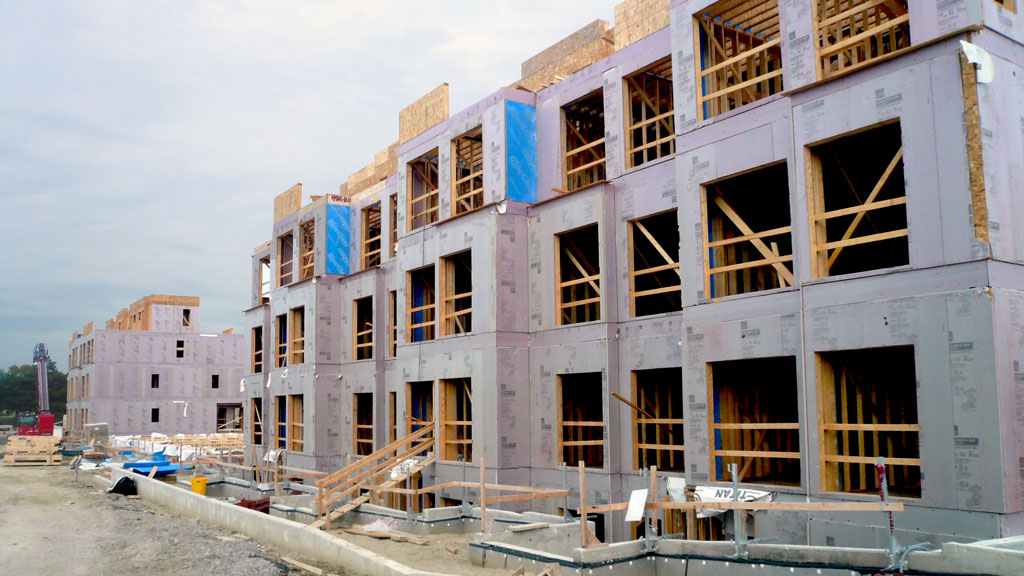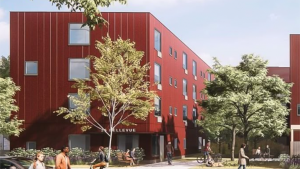TORONTO — Housing experts who have long promoted moving new home construction from suburbs to urban centres are calling for a similar approach to policy, saying several ideas currently percolating on the fringes of society in Canada have proven successful elsewhere and deserve a more central place in the national conversation.
They argue widespread adoption of government-supported affordable housing, the growth of alternative models like co-operatives and co-housing, and the increased use of advanced building techniques could all play a role in improving Canada’s housing system.
Such ideas, which have started to gain more traction in Canada in recent years, are already well-entrenched in many parts of Europe.
“There’s plenty of really exciting examples for Canada to learn from,” said Carolyn Whitzman, senior researcher at the University of Toronto School of Cities and author of the recently published book “Home Truths: Fixing Canada’s Housing Crisis.”
The situation in some places like Vienna — where a quarter of residents live in social housing — came about through very specific historical circumstances, but other regions show what’s still possible today.
France has committed to making 20 per cent of its housing “non-market” — whether government-subsidized or otherwise outside the private sphere — through a combination of buying buildings and constructing new ones. It has already reached the roughly 17 per cent mark while managing to integrate the homes into existing neighbourhoods to maintain diversity, Whitzman said.
She noted Canada had adopted the same non-market building targets in the 1970s, but abandoned the approach in the 1990s when the federal government got out of the business of housing construction and funding dried up.
Places like France, Denmark and Austria have made longer-term funding plans for affordable homes by implementing systems where governments provide subsidized loans, which, when paid back decades later, are then recycled into new ones.
“That sort of revolving fund is like a gold standard because it means that the policy is sustainable,” said Whitzman. “It does need to be thought of in 30-year timelines.”
The Danish system has helped create about 21 per cent non-market housing as of 2022, according to the most recent data from the Organization for Economic Co-Operation and Development, which notes the Netherlands stands at 34 per cent. Canada has about 3.5 per cent, the OECD found.
The federal government has rolled out numerous funding programs to increase housing, including a $55-billion apartment construction loan program, a $14-billion affordable housing fund and $4 billion for the rapid housing initiative.
While some programs like rapid housing specifically target the homeless and those in severe housing needs, Whitzman believes overall government programs aren’t doing enough for low-income people due in part to a vague definition of what affordable really means.
“There is an argument that eventually, if there’s enough supply, it’ll trickle down to low-income people,” she said. “But that would take 30 or 40 years, and we’ve got a housing crisis now.”
Steady funding and long-term commitments for non-market housing also allow non-market builders to grow big enough to become more sustainable. In Finland, which pioneered the ‘housing-first’ approach to ending homelessness that essentially involves providing housing to anyone who needs it, the non-profit Y-Foundation is the fourth largest landlord in the country.
Canada does have some larger-scale housing builders but there’s room for growth and consolidation, said Whitzman.
“You do need to be able to go to the bank if you’re a non-market provider and say, ‘Hi, I’d like $80 million,'” she said. “There’s very few non-market developers who can do that these days.”
Providing non-market housing, as well as more variety in general in housing options is part of making the whole housing system more stable, said Sasha Tsenkova, a professor at the University of Calgary’s School of Architecture, Planning and Landscape.
“Diversity is really critical for resilience,” she said.
A diversity of housing supply that includes non-market rentals, market rentals with security of tenure and price control and a variety of housing types to buy reduces the pressure to get into the market and allows for a more stable progression up the housing ladder, she said.
“People really are not forced to make the choice to become a homeowner,” said Tsenkova.
“So a 25-year-old doesn’t have to commit to home ownership and then be constrained in terms of labor, mobility or educational choices or life choices.”
By creating policies that make home ownership less necessary, it helps move away from the asset driven mentality in the system that pervades Canada, she said.
The diversity of housing types can also lead to the growth in areas like co-operatives, which come in a few models, or co-housing, which are community-driven developments where units are individually owned but there’s an emphasis on communal space.
The federal government has earmarked $1.5 billion to help develop more co-operative housing, while co-housing is also gaining traction. Some examples include Treehouse Village Ecohousing in Bridgewater, N.S., Little Mountain Cohousing in Vancouver and a smattering of others on the West Coast.
“For Canadians, it’s important to know that there’s lots of other ways to live,” said Ren Thomas, an associate professor at Dalhousie University’s School of Planning.
“It’s not just renting in a high-rise apartment building or owning a single family unit or a single family house.”
Along with different types of building ownership, there’s also innovation on the construction side, said Thomas, noting places like Sweden have widely adopted modular building techniques that make construction faster and potentially cheaper.
“The building techniques that they’re using are quite advanced, and, of course, they have the EU standards of sustainability, they’re more concerned about climate change.”
Canada is also working to build up modular construction, but it, too, requires long-term commitments and stable demand to be a success.
European countries have far from solved the housing shortages that are widespread globally, with sometimes years-long waiting lists to get into supportive housing and rising rents. But there is no easy solution to such an expensive, contentious and long-term issue.
While Canada is ramping up numerous programs, the results are so far mixed after so many years of being largely out of the game, said Whitzman.
“It’s partly the federal government was out of housing policy for three decades and it’s taken a lot of mistakes,” she said.
“We’re still at the baby steps.”
©2024 The Canadian Press











Recent Comments
comments for this post are closed